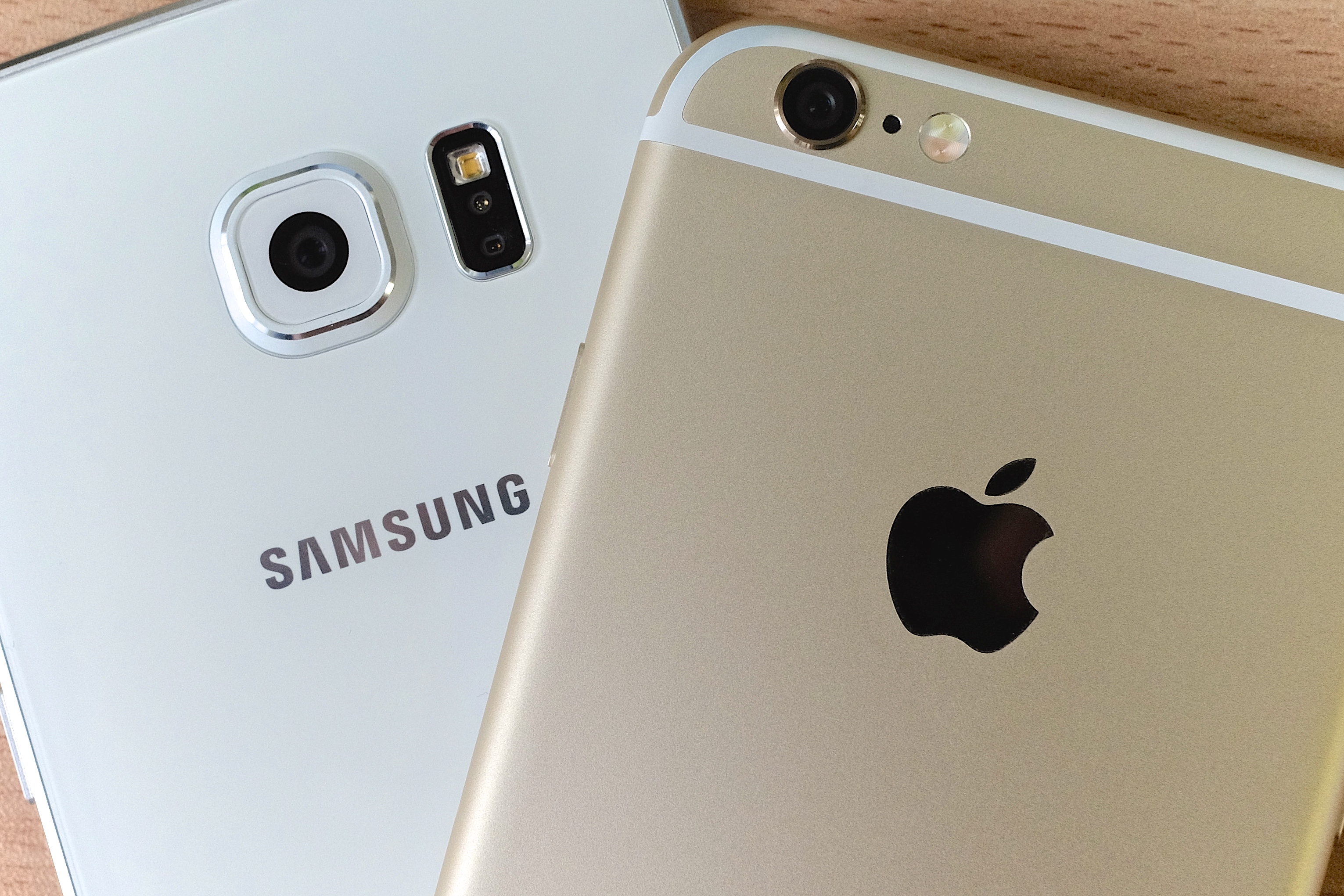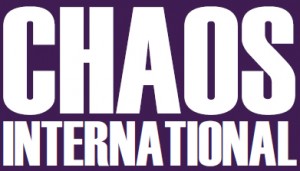Mar 10, 2014 | Digital Industry, Globalization, Passage au crible (English)
By Adrien Cherqui
Translation: Lawrence Myers
Passage au crible n°108
 Source: Flickr
Source: Flickr
February 19, 2014, marked the end of mediation between Apple and Samsung Mobile Communications during which the directors were supposed to negotiate an agreement. Let us recall that the attempt to compromise launched in January 2014 by the San Diego court, had incited the two groups to find an arrangement to avoid a new trial.
> Historical background
> Theoretical framework
> Analysis
> References
Historical background
According to the research firm IDC, more than one billion smartphones were sold in 2013, which is to say 38% more than in 2012. Three firms currently occupy the podium of global sales. In terms of parts of the market held in 2013, Samsung holds 31.3%; with 313.9 million units sold; Apple, which sold 153.4 million iPhones, conquered 15.3%. As for the third, the Chinese firm Huawei, it still fell far behind the latter with only 48.8 million sales or 4.9%.
Appearing on March 6, 1983, with the first cordless communication device offered by Motorola, the mobile technology sector built itself on innovation and development of new technical norms. The popularization of mobile telephones during the 1980s and the appearance of innovative standards like GSM (Global System for Mobile Communication), the 3G and from now on 4G, have made innumerable services possible such as the utilization of audiovisual content, applications and web surfing. These components are now fully operational in smartphones. Deeply transformed by these multiple changes, the telecommunications domain was historically organized around a few manufacturers. Several of them such as Nokia, Huawei, Samsung, LG and more recently Apple – with the 2007 release of the first iPhone which democratized these products – currently makes up a veritable oligopoly. The latter is characterized by exacerbated competition, notably in research and development. In this context, competitive dynamics result in an illegal use of patents belonging to rival groups.
The two giants, Samsung and Apple, have been confronting one another in court since April 2011 in several dossiers. The most emblematic ruling remains that of August 2012 during which a jury sentenced the South Korean Samsung to pay one billion dollars to Apple for the violation of patents relative to iPads and iPhones. In the course of these judicial proceedings, Samsung primarily blamed Apple for using technologies and technical norms that it had patented. For its part, Apple estimates that Samsung plagiarized the design of its iPads, as well as their user interface with the models Galaxy S and Galaxy Tab. But beyond competition which one could consider restricted to these two companies, the ongoing case is also targeting one of the competitors of Apple’s operating systems iOS: Google’s Android, used largely by Samsung.
More recently, in June 2013, the legal battle between the two major companies in mobile telephony, were brought before the USITC (United States International Trade Commission), a federal agency competent in matters of trade litigation. This authority recognized that the American company Apple had violated one of the property titles essential to Samsung. The USITC then prohibited importation, the sale and distribution by Apple of wireless communication tools and portable music devices. However, this decision was never carried out. In fact, on August 3, 2013, President Barack Obama and his administration censured the measure, a reaction that set off a strong response amongst Korean authorities.
Theoretical framework
1. The transnationalization of the mobile technology market. Transnational firms follow a distinctive production logic that allows room for cooperation in research and development. But the mutualization of resources, the reduction of costs and the growth of productivity condemn these competitors to more integration.
2. The structural power of transnational firms. Major actors of the global scene, certain high tech brands have the capacity to reconfigure themselves in a distinct sector, all the while imposing some of their choices. This structural change – to borrow Susan Strange’s expression – shapes and determines the structures of global economy within which other groups develop.
Analysis
Mobile telephony presents itself as a dynamic industry within which numerous economic operators interact. They possess resources that allow them to be at the point of convergence of three industries: mobile telephony, hardware and software. Globalization and the rise of new technologies cause companies to turn towards new economic models. Yet, such models imply the optimization of their growth, better reactivity and larger competiveness. Let us, however, note a production initially conceived for national markets, transformed today into a global market organization. This structural change encouraged by globalization has driven this industrial branch to its transnationalization and to the complex relationships that Samsung and Apple maintain.
Armed with experience superior to that of Apple, Samsung operates in all the stages of development of computers, tablets or smartphones. From the processor to the screen, passing by the software, it has the necessary production resources available to it for the protection of high tech devices and largely dominates the entire industry. While the South Korean group is showing itself to be a major competitor to the American Apple, logics of cooperation are paradoxically put into place. Let us recall that the A5 processor, designed by Apple and produced by Samsung, remains a central piece of the iPad 2 and the iPhone 4S. Besides the A8 microchip that the upcoming Apple devices will be equipped with will be made by the TSMC group (Taiwan Semiconductor Manufacturing Company).
However, the American firm is not for as much abandoning the South Korean group, which in the future will remain responsible for 30% to 40% of the production of this component, in order to prevent any shortage.
Interdependence currently characterizes the production of computer equipment used for the design of mobile telephones and tablets. In other words, Samsung delivers its technical know-how and its industrial capacities to Apple, while the latter offers Samsung a new market. This is alliance capitalism, a phenomenon well characterized in its time by John Dunning. Put another way, the duo rivalry-cooperation will from now on structure new inter firm relationships.
This production logic is accompanied by a circulation of the technologies that pertain to the redistribution of power within mobile telephony. The highly competitive characteristics of this sector have indeed driven to the use of certain patented standards, which have in turn become indispensable. From now on, this now common usage has been institutionalized. During the first lawsuit in which Samsung was opposed to Apple, the former made particular reference to patents linked to 3G transmissions, considered standard essential patents. Still, this practice resembles what sociologist Ulrich Beck called private law and which here applies to technical norms, which shows the relative powerlessness of the state actor and defies the concept of the Legislator State.
References
Balzacq Thierry, Ramel Frédéric (Éds.), Traité de relations internationales, Paris, Presses de Science Po, 2013.
Laroche Josepha (Éd.), Passage au crible, l’actualité internationale 2012, Paris, L’Harmattan, 2013. Coll. Chaos International.
Le Monde, «Brevets : Apple et Samsung échouent à s’entendre aux États-Unis», Feburary 23, 2014
Mosca Marco, «Les tops et les flops du marché des smartphones en 2013», Challenges, January 28, 2014
Strange Susan, Stopford John, Henley John S., Rival States, Rival Firms: Competition for World Market Shares, Cambridge, Cambridge University Press, 1991.
Strange Susan, Le Retrait de l’État. La dispersion du pouvoir dans l’économie mondiale, trad., Paris, Temps Présent, 2011.
Strange Susan, « States, Firms and Diplomacy », International Affairs, 68 (1), 1992, pp. 1-15.
Jan 7, 2013 | Digital Industry, Globalization, Passage au crible (English)
By Justin Chiu
Translation : Anton Stzepourginski
Passage au crible n°82

Pixabay
On the 21st of December of 2012, the Samsung company was addressed a warning by the European Commission. This action was taken against an abuse by Samsung of its dominant position judging on the excessive use of its patents. Indeed, patent infringement litigations between Apple and Samsung are still ongoing in Japan, South Korea and in several Western countries. As an example, in August 2012, the South Korean Samsung Group was ordered to pay a record $1-billion fine to Apple.
In this worldwide range of patent battles between the two electronic giants, the European Commission has become the first supranational body trying to ease the tensions. Yet, the question remains as to why smartphone manufacturers don’t mind using their competitors’ patents while they know they could face legal proceedings.
> Historical background
> Theoretical framework
> Analysis
> References
Historical background
In 1983, the first mobile phone was put on the U.S market. Since the Motorola DynaTAC 8000, the development of the mobile phone market symbolizes alone technical progress. However, the introduction of the GSM standard (Global System for Mobile communication, also called 2G for “second-generation wireless telephone technology“) in the middle of the nineties was the real kick start. Indeed, the 2G allowed data to be transmitted through an analog signal, a much cheaper operation than using the previous analogous mode. At the same time, the telecommunication sector was being financialized, but after its worldwide deregulation, merger and acquisition policies started to be implemented; especially in developing countries, by every incumbent operator in the Triad. All of those are now private companies.
Once again, the telecommunication sector changed in the middle of the two-thousands when the 3G hit the market. With a high-speed network it became possible to use new services such as mobile applications (apps) or audiovisual content. Thus, this gave birth to a new economic scheme represented by three components: mobile telephony, electronics, and software. Nowadays, only smartphone manufacturers have the required technical resources to connect those three components. Meanwhile, benefits of the former incumbent operators were declining.
Today, the smartphone market constitutes a global booming sector. With 153.9 million units sold in the second quarter of 2012, this market increased by 40% compared to the analogous period of the previous year. Samsung and Apple own almost 50% of this market. The former has been on the telecommunication market for decades and now holds a large number of key patents on 3G. As to the latter, it greatly influences its competitors with patents on control interface and design. Smartphone-related manufacturing techniques are frequently exchanged between competitors, if not copied. Yet, as trade war is raging on, they have to find new adapted means in order to increase their sales. As a last resort, legal proceedings can be used to reduce competitors’ sales. Since the first trial opposing Nokia and Apple in October 2009, patent-related cases between smartphone manufacturers keep on making headlines.
Theoretical framework
1. A telecommunication sector with no order. Today, there is no form of global governance in the field of telecommunication. In fact, as they are becoming more and more transnational, the number of trials between smartphone and tablet manufacturers keeps increasing. The international telecommunication rules set by the ITU (International Telecommunication Union) are now obsolete. As a matter of fact, the treaty was reformed for the first time at the World Conference on International Telecommunications in 2012. In 1997, the WTO concluded a General Agreement on Telecommunications introducing deregulation in this sector. However, its provisions are hardly implemented on this market once owned by nation-states. Because of this lack of international authority, rules are only implemented on a national basis. As to the courts precedents, they are piecemeal.
2. A transnational spread of technical data. Over the past three decades, operators got their supplies from a globalized market. It helped unifying telecommunication norms and standards at a global level. This process allows interoperability in mobile telephony, a matter of critical importance for both companies and individuals. Smartphone manufacturers are in the heart of innovative industries and their goal is to sell their goods all over the world. Yet, their smartphones need continuous improvements considering the speed of technical progress and the free-access to data. Therefore, patent infringements are strongly recommended, if not compulsory.
Analysis
Engineering technology gives relevant information on techniques, and according to Marcel Mauss it constitutes an important part of sociology. In other words, the smartphone industry has its place within international relations and thus doesn’t have to deal with economic improvements and advancements of knowledge and innovation in these target areas. However, it is essential to point out how fast and intense the changes in the market can be and, as a result, the way they impact on our society. The smartphone is not only a communication device it is above all a status symbol: as an example, Blackberry mobiles were very popular amongst businessmen. However, prices have declined thanks to the competition between manufacturers that’s why all social classes can now afford a smartphone. This is good news for customers who need to be connected at all times in order to share information with the outside world through their social networks.
It is very difficult to enter the smartphone market without a large portfolio of patents and solid legal expertise. Therefore, the main actors of this market are only transnational companies organized in an oligopoly. Quarterly sales results play a major role in the competition between the manufacturers, indeed, poor profits outlook can cause steep decline in companies’ stock market capitalization. This global market is growing fast, and its actors must always penetrate new markets or consolidate their assets if they don’t want to get kicked out of the game. Also, another problem is that the computer electronics life cycle is shortening while investment costs in research and development are increasing. This vicious circle is very difficult to break for companies facing difficulties, whereas, in the meantime, dominant companies strengthen their sales. This is why Samsung was asked by the European Commission to grant license to its essential industry-standard patents. However, in the legal struggle between Samsung and Apple, the former often finds itself in a bad situation because claims don’t deal with internal control related patents.
Out-of-court settlements happen a lot in this field. A surprising example is the settlement found in the case between Apple and HTC in November 2012. They decided to avoid litigation and they agreed on a 10-year reciprocal license agreement for existing and future patents. In fact, HTC has suffered a lot from its trials and is no longer Apple’s enemy. Today, the Taiwanese smartphone manufacturer no longer partners with Google and Microsoft. HTC is Apple’s ally, for now.
As long as Samsung and Apple will keep their dominant market position, this patent war will last. Ironically, the real challenge doesn’t lie in these patents but in the innovative business strategies of those smartphone manufacturers and in the implementation of an international arbitration mechanism.
References
Commission européenne, « Abus de position dominante: la Commission adresse une communication des griefs à Samsung pour utilisation abusive possible de brevets essentiels liés à une norme de téléphonie mobile », Communiqué de presse, 21 déc. 2012, à l’adresse web : http://europa.eu/rapid/press-release_IP-12-1448_fr.htm [28 déc. 2012]
Elias Norbert, La Dynamique de l’Occident, trad., Paris, 1975.
Le Monde, « Samsung condamné à verser plus d’un milliard de dollars à Apple », 25 août 2012, à l’adresse web: http://www.lemonde.fr/technologies/article/2012/08/25/guerre-des-brevets-apple-remporte-une-victoire-ecrasante-contre-samsung_175 0814_651865.html [28 déc. 2012]
Mauss Marcel, Techniques, technologies et civilisation, Paris, PUF, 2012.
Musso Pierre, Les Télécommunications, Paris, La Découverte, 2008. Coll. Repères.
Roseau James N., Sign J. P. (Ed.), Informations Technologies and Global Politics, The Changing Scope of Power and Governance, Albany, State University of New York Press, 2002.
Strange Susan, The Retreat of the State. The Diffusion of Power in the World Economy, Cambridge, Cambridge University Press, 1996.
 Source: Flickr
Source: Flickr



